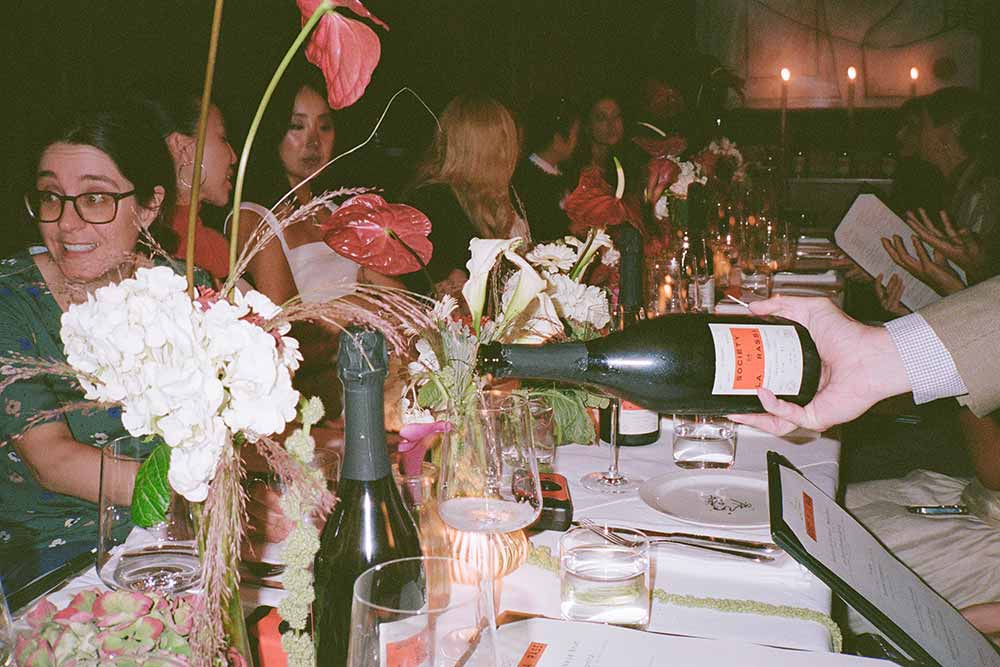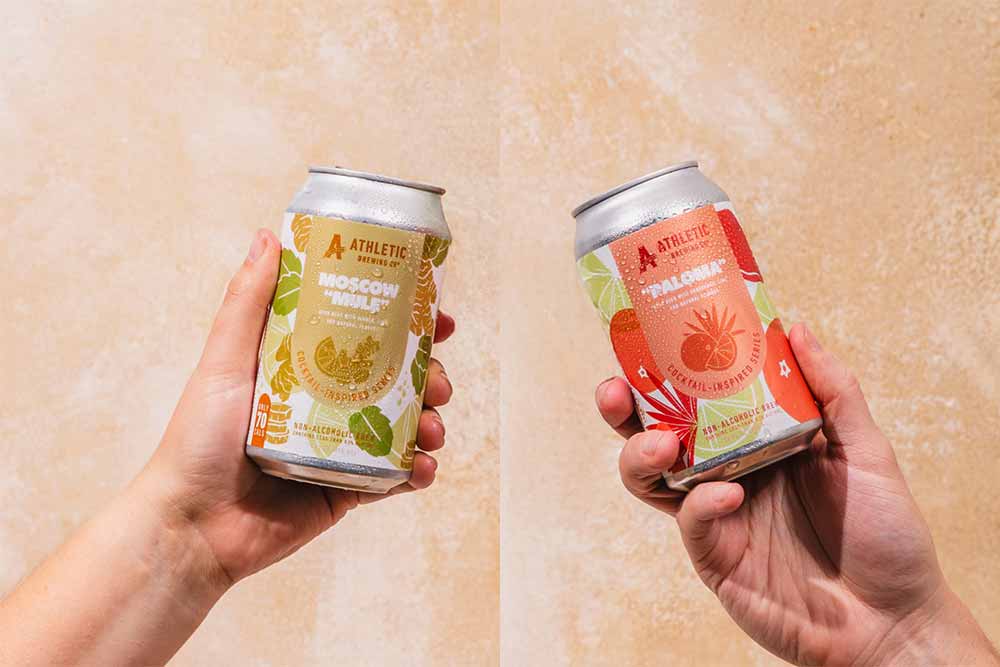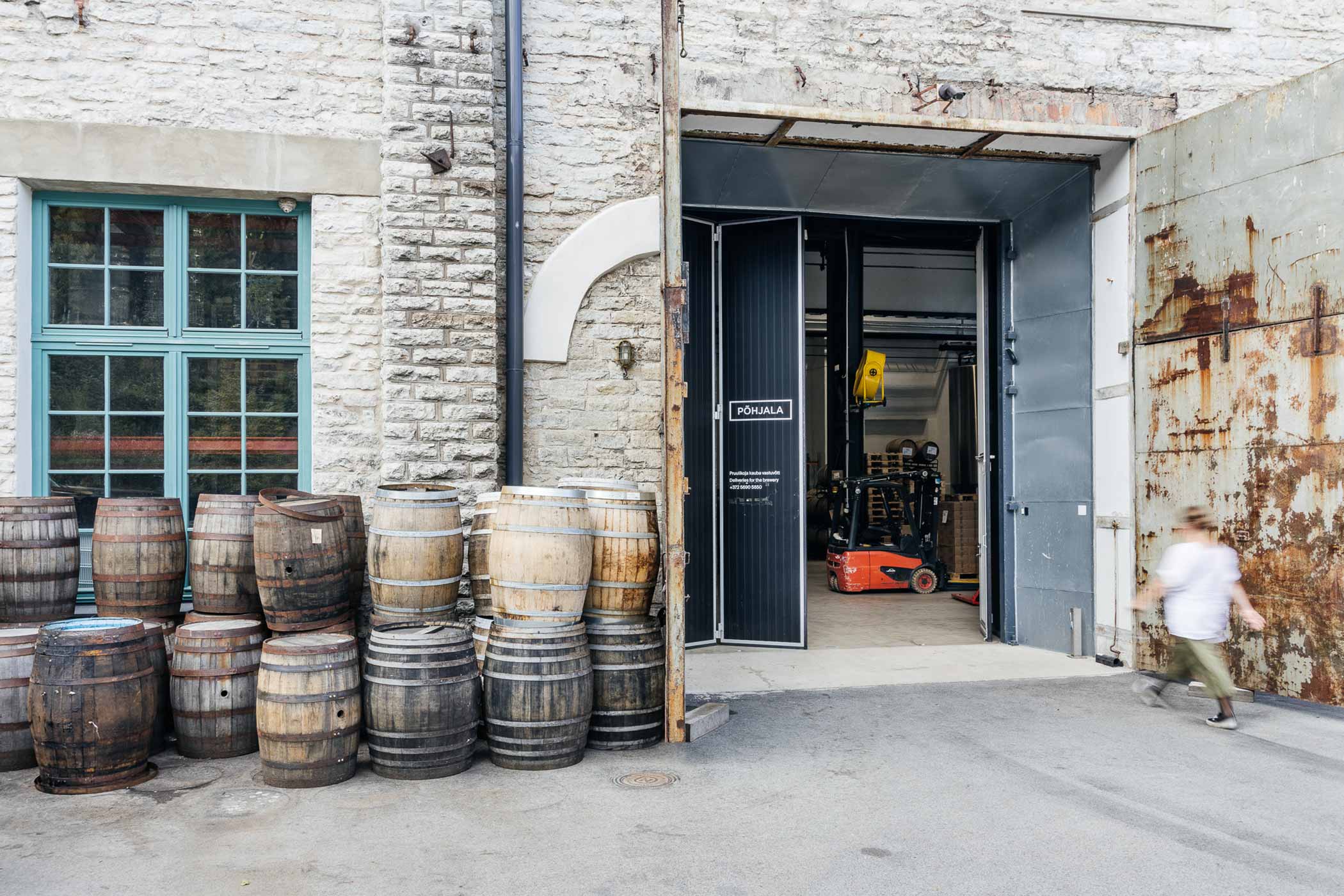Shop
The 11 Craft Beer Trends to Watch in 2025
To thrive in 2025...
The Juiciest of 2024!
When the calendar page flips each year, we have a few things at the top of our minds. First, we put down on paper our beer resolutions. Second, we always want to help those navigating Dry January decide what to drink. And lastly, we tell you which breweries to keep an eye on for the next twelve months. But perhaps our most important article at the beginning of every new year is the one where we predict the upcoming craft beer trends to watch.
We’re not going to sugarcoat anything here. For the first time since the turn of the century, we finally saw more breweries close than open (399 vs. 335), according to the Brewers Association (BA). The BA also reported that craft beer volumes declined for the second straight year, which newly appointed BA President and CEO Bart Watson expects to continue in the low single digits in 2025.
This reality has been creeping toward us like an impending thundercloud. But seeing the rain finally start to fall on our doorstep jarred us a little.
But as Watson reminded us in a presentation called ”Ten Points and Predictions for 2025”, “The closing rate with 399 is still very low if you compare craft brewing to other industries in wider hospitality such as bars and restaurants.”
Even with a fair amount of headwinds on the horizon, Watson has cause for hope. “If I described what is going on in beverage alcohol, I’d say we’re in an era of flavor, of tremendous variety of products and innovation,” said Watson. “There is a reason for optimism because when people pick craft and craft brewers succeed, it’s exactly in those areas … exactly where craft brewers are built to play because craft brewers have the tools and the know-how to be competitive in this era.”
Watson called brewers “nimble and adaptable entrepreneurs” who have proven capable of weathering countless storms while keeping their unique brand voice, trying out new models and products, and continuing to innovate.
Which is exactly what folks will need to do to thrive in 2025.
Accordingly, most of our craft beer trends below follow that advice. In no particular order, these are our eleven projections, forecasts, and predictions for craft beer trends in 2025.
Hop Culture’s 11 Craft Beer Trends to Watch in 2024
High on “The Fifth Category”
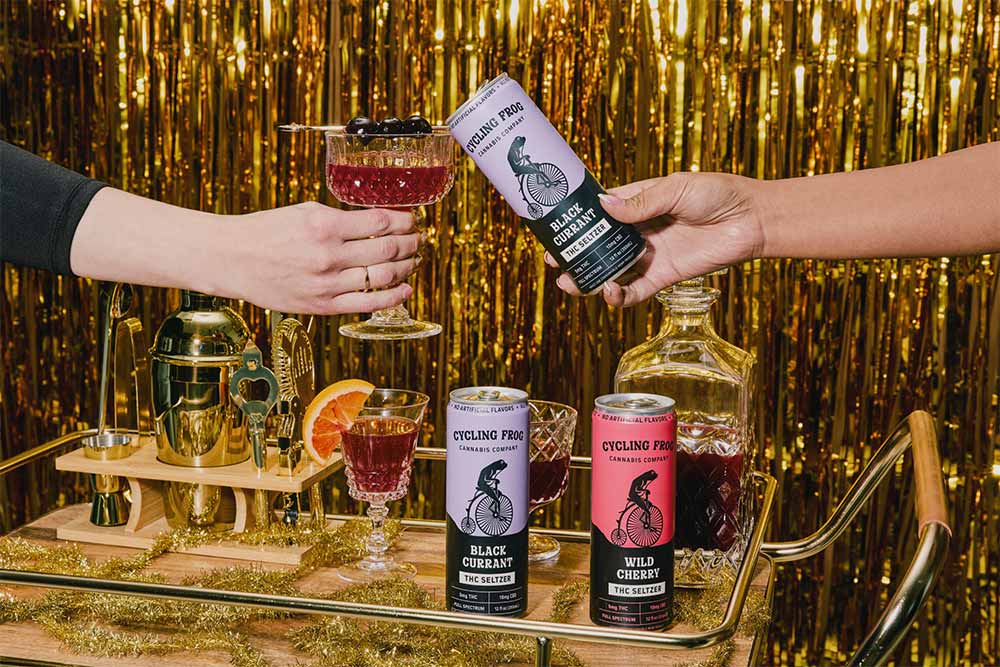
Photography courtesy of Cycling Frog
Without a doubt, this is the category we expect to see the highest (pardon the pun) growth in 2025.
According to NielsenIQ Associate Director of Beverage Alcohol Thought Leadership Kaleigh Theriault, in a presentation Hop Culture attended at Brewbound Live, seventy-eight million Americans reported consuming cannabis, and thirty percent of the U.S. adult population self-identifies as a cannabis consumer. This number has doubled in the last few years.
“Eighty-eight percent view cannabis as a healthier choice,” presented Theriault. “And seventy-four percent said they’ve cut back on alcohol.”
Some of the top reasons for choosing cannabis included to relax and to avoid a hangover.
“We know cannabis is on the rise in the United States,” said Theriault, who mentioned they’re currently tracking over $70 million in sales of this “fifth category,” which includes drinks with cannabis, THC, hemp, Delta 8, or Delta 9.
For example, Plift, a hemp-infused beverage. Or Cycling Frog, which offers everything from Delta 9 THC seltzers to 50 mg THC and 50 mg CBD lemonades.
Over the summer, Minnesota instituted a new law that allows taprooms to serve THC-infused drinks, playing a huge role in bridging that gap between the craft beer and cannabis industries.
Data from this category is still relatively new, so while cannabis-infused beverages are poised to gain a share of retail shelf space in 2025, we can’t say for sure with any hard-backed data just yet.
But that’s what a trends piece is for…predictions!
And you can bet we’re high on cannabis-infused beverages in 2025.
Cocktails in the Taproom
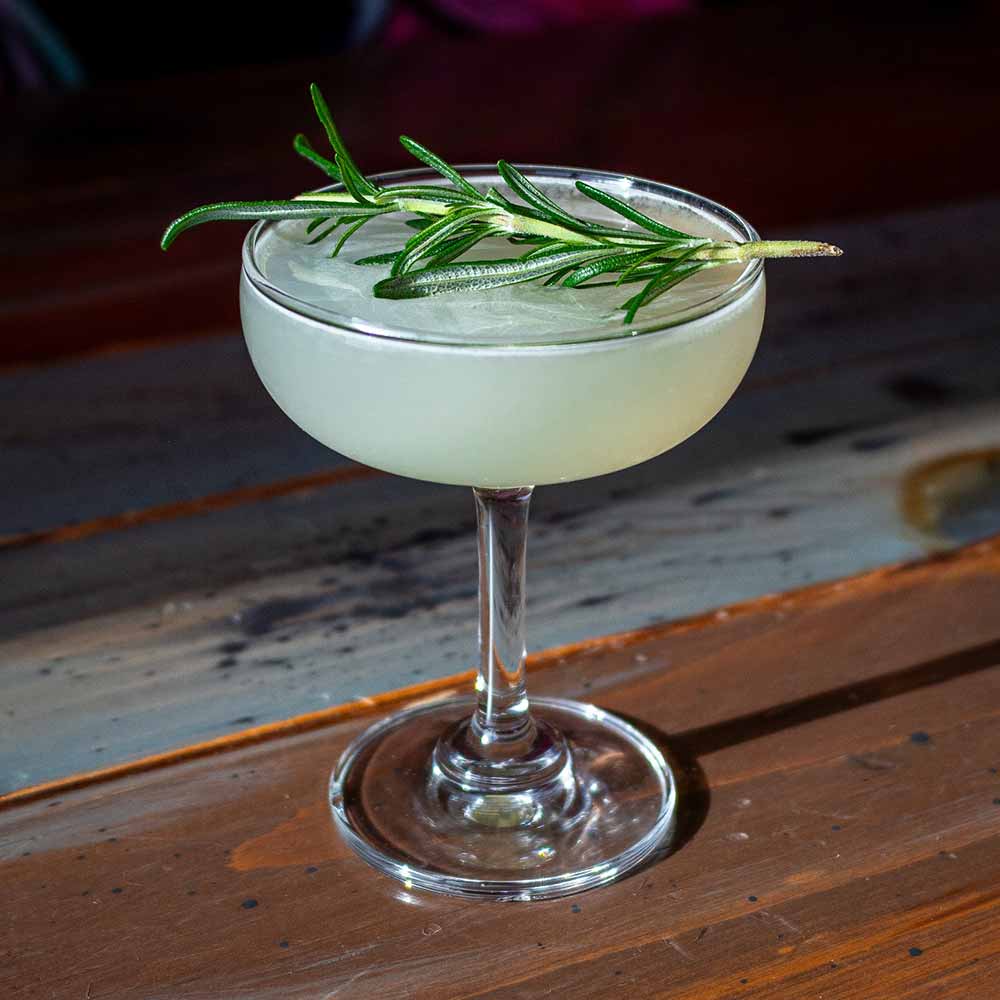
Photography courtesy of Lua Brewing
Two years ago, we included a return to taprooms on our list of craft beer trends. We predicted that folks would emerge from their COVID cocoons and get back to drinking on-premise. Last year, we predicted that breweries would have the extra challenge of evolving the taproom experience. From people we’ve talked to in the industry, those who spent their money at taprooms no longer wanted just beer; they didn’t just want new releases; they wanted an experience.
This year, taprooms will need to refocus on their offerings once again, expanding beyond beer to cocktails.
West Sixth Brewing Director of Retail Operations Jesse Brasher shared, “People want options, and taprooms seek to continue to be everybody’s welcome gathering spot. They’ll not only add more offerings but also put more effort into making those options better and not afterthoughts beyond the scope of the core competency.”
He predicts cocktails to be an area of focus, specifically those with “wilder infusions and eye-catching garnishes.” I.e., Instagrammable moments. “There will also be a reaction to those, with some folks favoring light-touch presentation and showcasing unique spirits and simpler builds that let the core ingredients shine,” he wrote in an email to Hop Culture.
He also specifically pointed to highballs as the new consumer and taproom favorite. “Think Seven and Seven, scotch and soda, gin and tonic, Tom Collins, rum and Coke,” he wrote. “Delicious to drink, easy on the wallet, cost-effective, simple to make, and fun to riff on…what’s not to love?”
We may even see an influx of non-alcoholic spirits (more on that below).
Bottom line: For a couple of years, we’ve known that taprooms can no longer just serve beer; we predict cocktails will be a must-add to brewery tap lists in 2025.
RTD Meets NA
A recent study from global beverage insight firm IWSR called IWSR’s No- and Low-Alcohol Strategic Study 2024 reported that across ten key markets, the no- and low-alcohol market is expected to expand by over four percent volume CAGR through 2028.
IWSR predicts that no-alcohol RTDs will grow at the fastest rate through 2028.
In the report, IWSR Head of No- and Low-Alcohol Insights Susie Goldspink said, “As the no-alcohol category matures, consumers want more than just an absence of alcohol. They want products that deliver on taste, complexity, and overall drinking experience. This evolution is pushing the category further, prompting brands to innovate and raise the bar in terms of quality and variety.”
Piggybacking on our previous trend, we’re seeing that variation in the form of not only NA spirits and wine but also cocktail-focused NA beers.
Non-alcoholic brewing giant Athletic recently announced a new line of NA beers—all cocktail-inspired.
Fashioned after the eponymous cocktail, Paloma packs a grapefruit punch with an undercurrent of lime. Athletic encourages you to actually drink this non-alcoholic beer over ice with a lime wedge. Although, we loved it just on its own.
Similarly, the Moscow Mule amplifies the flavors of this classic bar drink—ginger and lime and spicy and tart.
And if Athletic’s doing it, well, we expect others to follow suit soon.
Low vs. High
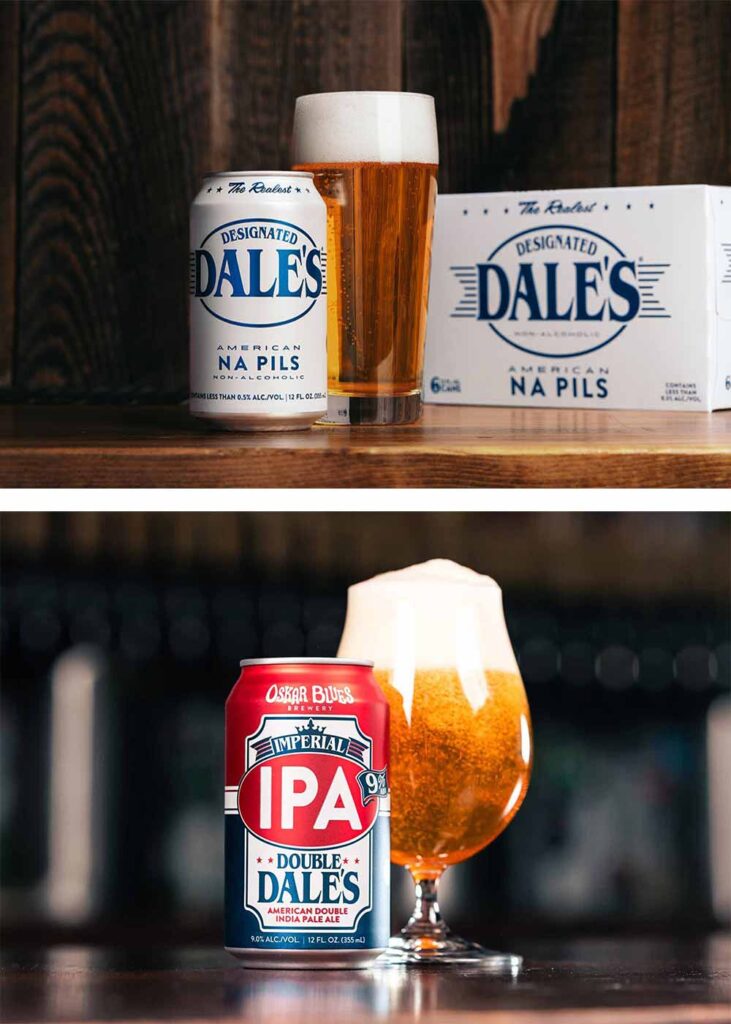
Photography courtesy of Oskar Blues Brewery
By now, we’ve all realized that the non-alcoholic segment isn’t just a phase; drinking non-alcoholic beer, wine, and spirits has become a legitimate part of our beverage industry with the numbers to back it up.
A recent report Hop Culture received from NielsenIQ called “Beverage Alcohol: What Will Drive 2025?” showed that off-premise non-alc sales from the last fifty-two weeks recorded $740 million—up a little over $175 million from the year before. The report also stated that searches of non-alcoholic beverages and alternatives on Google reached 51.9 million, accounting for 1.5 percent of all alcoholic beverage searches in 2024.
Overall, NielsenIQ predicts that the non-alcoholic space in off-premise channels will reach over $1 billion in sales by the end of this year.
“Thinking about non-alc products, we have a lot of new players in this space, whether it’s traditional craft brewers entering into non-alc like a Firestone Walker, you have your non-alc-only companies like Athletic or RationAle, you have the big players like Heineken, Bud, [soon] Michelob Ultra,” said 3 Tier Beverages Consultant Mary Mills during a presentation Hop Culture attended at Brewbound Live last December. “It’s becoming a really popular space to enter.”
Anecdotally, we agree.
For the past 365 days, we’ve been inundated with packages with new NA beers or from new NA breweries, including Untitled Art, Sierra Nevada’s new Trail Pass flavors, and Firestone Walker’s first foray into NA beer—8ZERO5.
The big dogs like Athletic, RationAle, and Best Day continue to grow.
Categories like hop water are a “fun one,” Theriault said during a presentation Hop Culture attended at Brewbound Live. Although it’s been around for more than five years, this non-alcoholic drink has “consistently grown,” said Theriault. “We’re tracking thirty million in dollar sales in our channels, which is up forty-seven percent from a year ago.”
We’ve even seen a new thing called “zebra striping” become popular. The practice includes going one-for-one between low- or no-alcohol beverages and alcoholic ones. The idea is that you moderate your drinking and help prevent a nasty hangover.
But what’s slipping a bit under the radar is a similar rise in higher-ABV beverages alongside the explosive growth of non- or low-alcohol drinks.
“Non-alc has almost doubled in the last two years,” said Mills, “but we often skip past the high ABV—[which had] $256 million growth in the last year in the 7+% ABV space.”
Both Theriault and Mills examined the numbers, discovering a lot of crossover between consumers looking for non-alcohol and high-alcohol options.
“We saw that a third of non-alc buyers purchased 7% ABV and above beer, so a pretty significant number of consumers are overlapping,” explained Theriault.
Mills picked up the thread, “This is consumer-driven by different occasions. Consumers aren’t just consuming one or the other; they are finding what fits them based on the occasion.”
Which leads us perfectly to our next prediction…
Mini vs. Mega
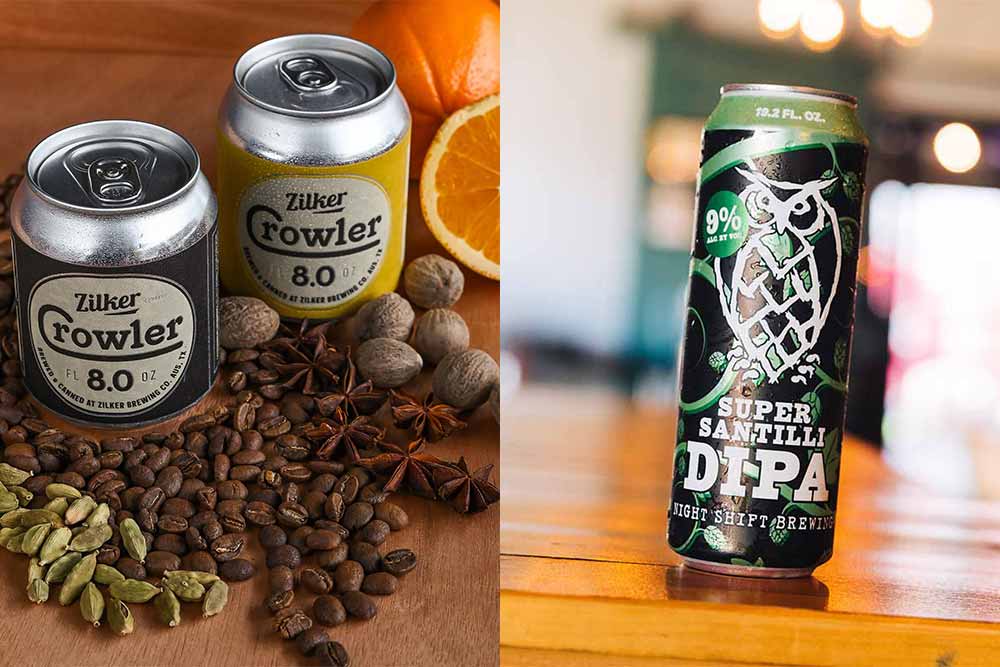
Photography courtesy of Zilker Brewing Company (on the left) and Night Shift Brewing (on the right)
When, over twenty years ago, Oskar Blues Founder Dale Katechis put his iconic Dale’s Pale Ale in a 12oz can, he started a canning revolution. More recently, we remember when tallboy 16oz cans seemed new and novel. Of course, we can find this seemingly more bang-for-your-buck can size everywhere nowadays. But breweries aren’t resting on their laurels; they are introducing new packaging formats, both big and small.
Currently, 19.2oz cans, also known as stovepipes, are peaking.
Off the top of our heads, we’ve seen these breweries release some of their core beers in 19.2oz formatting—New Belgium (Voodoo Ranger), Bell’s (Two Hearted Ale, Hazy Hearted Ale), Firestone Walker (Double Hopnosis), Lawson’s Finest Liquids (Sip of Sunshine), Night Shift (Santilli), Tröegs Independent Craft Brewing (Troegenator, Perpetual IPA), North Coast (Old Rasputin, Scrimshaw), Jack’s Abby (House Lager), and Oskar Blues (Dale’s Double IPA, Imperial Hazy Blues IPA), among others.
At one point in 2023, according to NIQ retail scan data, 19.2oz cans were craft beer’s number one dollar growth driver (up 57 percent versus 2022), even ahead of twelve-pack cans. New Belgium’s Voodoo Ranger accounted for a lot of that growth.
The popularity of stovepipes makes sense. With standing out on the shelf at a premium, stovepipes tower over the competition, providing a clear differentiation point for breweries.
Equal to twenty British ounces (aka an imperial pint) but the same diameter as a 16oz can, 19.2oz cans give breweries more bang for their space while giving consumers more bang for their buck.
Breweries seem to put their higher-ABV styles into this format because you can buy and drink one throughout a barbecue, birthday party, picnic, or what have you, instead of purchasing a twelve- or six-pack of something.
On the other end of the spectrum, we’re keeping an eye on brands going low—like these mini 8oz cans from Zilker, Westbound & Down’s Western Justice, or Hopewell’s Lil Buddy.
In all fairness, we wrote about this trend last year, but we weren’t sure if mini cans, sometimes called ponies (about seven ounces of beer), would catch on.
With New Belgium announcing its 7.5oz 9.5% ABV Mini Rippers expected to hit shelves in March, we think it’s fair to say that we can cement this trend into 2025.
“The idea there is to really tell people what this is—this is a whole new occasion,” said New Belgium Brewing CEO Shaun Belongie during a Beer Marketer’s Insights seminar, as reported by Brewbound. “Imagine you’ve just called the Uber, waiting, you got five minutes: Mini Ripper. You really want a cold beer, [and] you want it cold the whole time: Mini Ripper.”
Will more breweries pick up on the pony?
We say all signs point to yes.
Need for Nostalgia
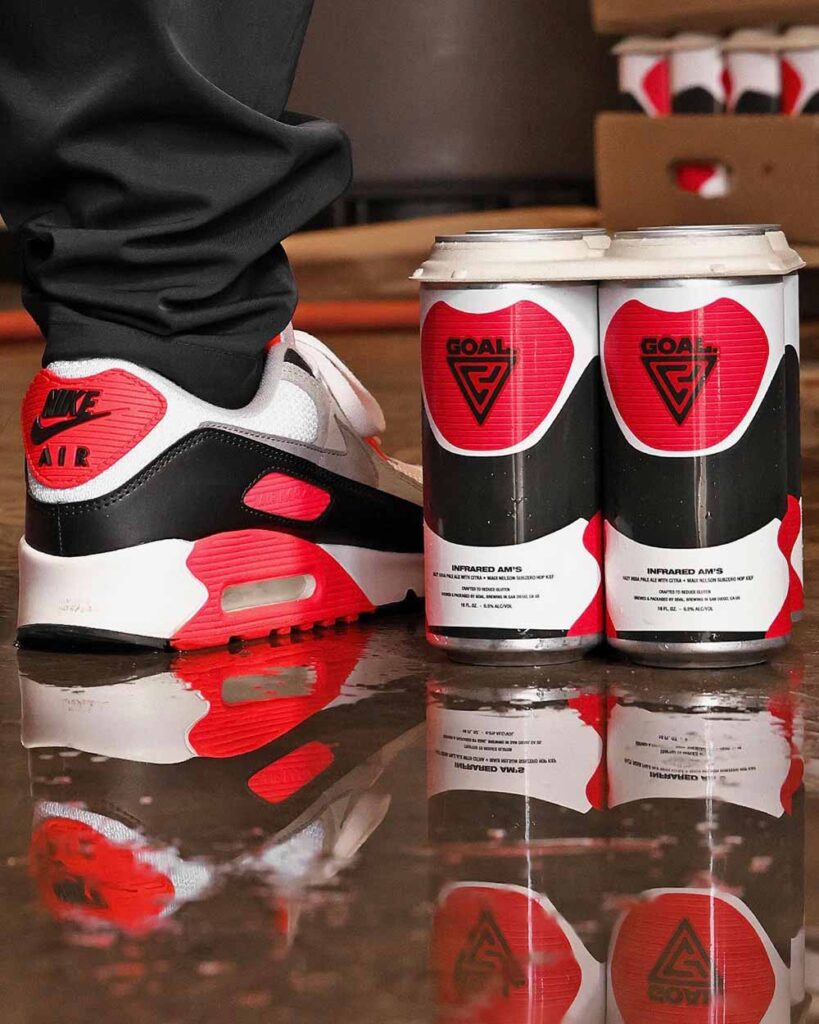
Photography courtesy of GOAL. Brewing
Culture is cyclical.
Pokémon is cool again, right? (Or at least those who held onto their Charizard could get a little richer. We tried to find our old cards, but no dice.)
Denim on denim is no longer taboo. (We wore a getup like this many times.)
Pottery and knitting are now the “it” hobbies? (We haven’t done it, but we have a few pieces in our house from friends who have.) If this sitting-on-your-butt hobby didn’t hit, getting up and going to the roller rink again sure did.
And Barbie… Need we say more?
Not every trend of yore hits us on the head again like a pog. (That reference should date us. And if you don’t even know what that word means, you’re probably not of legal drinking age.) But naturally, some do.
And craft beer is no different.
It may seem like an oxymoron, but for breweries to move forward, they may need to take a step back. We see a hunger for turning back time inside the taproom.
A report NielsenIQ shared with Hop Culture called “Beverage Alcohol: What Will Drive 2025?” expects Gen Zers who are of legal drinking age (LDA) to “shape their habits and preferences through ties to cultural connections and nostalgia.”
Roughly half of Gen Z are now over twenty-one, with households purchasing alcohol doubling in the past two years from 4.6 million to 9.3 million, according to the report.
“In a pattern known as the twenty-year cycle,” NielsenIQ believes that “what was once outdated can gain a second life, especially if it evokes feelings of nostalgia and familiarity.”
Think baggy jeans, graphic tees, Mario Kart, N64s, Polaroid cameras, flip phones, and TV shows like Friends and The Office.
We’ve already seen this in the beer world, with breweries embracing everything from N64 game nights in the taproom to Friends-inspired beers and labels inspired by sneakers like Nike Air (one of our favorite beer labels of 2024).
Even beer styles are getting in on the action.
Revolution Chief Marketing Officer Doug Veliky, who also runs an excellent substack called Beer Crunchers (please sign up for his newsletter if you haven’t already), chronicled the rise, fall, and current re-rise of Black IPAs.
So, in the future, expect to see the past.
Wanna Play a Game?
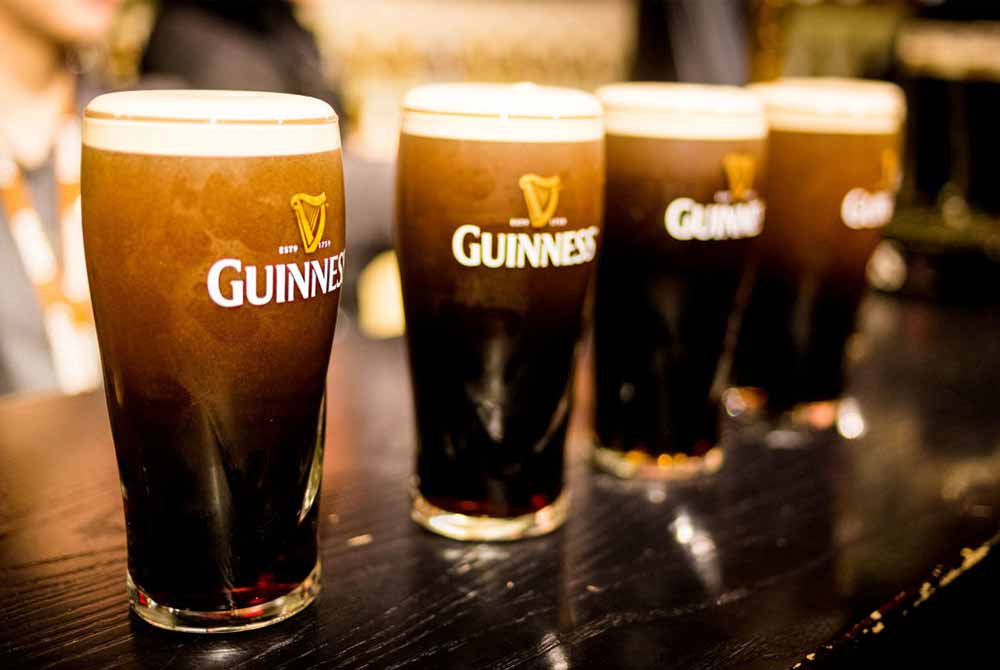
Photography courtesy of Guinness Brewery
Yes, we just dated ourselves again with that subheading, but hey, as we predicted, nostalgia is in.
Drinking games are nothing new. We’ve all played our fair share of pong, flip cup, and shotgunning (if that can even be considered a game; we don’t find it very fun). But we all played those “games” about fifteen years ago.
The LDA kids these days have a new game in mind: Splitting the G.
You’ve probably seen this trend on TikTok, which involves chugging your first sip of Guinness to such perfection that when you put the glass back down, the liquid “splits” the “G” in the name Guinness.
What will those hoping for viral social media glory think up next? We can’t wait to see this year.
Maybe it’s shooting back a tiny glass of foam, drinking ice-cold malört on tap, or gulping down the contents of a tiny bottle wrapped in a brown paper bag.
Year of the Rice Lager
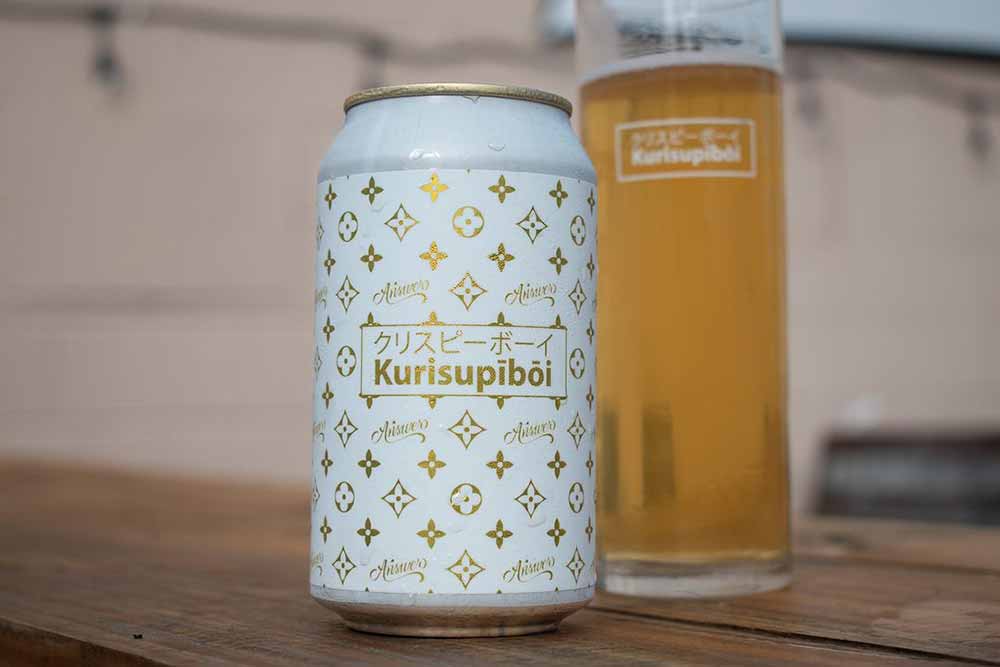
Photography courtesy of @theanswerva
Speaking of games, we have to admit this has become one of our most fun to play: deciding exactly what “Year of the Lager” it will be in the new year.
We can’t tell you how many years we’ve heard the ubiquitous phrase “Year of the Lager” thrown around, predicting consumers will drink more lagers in the next twelve months.
We finally decided to turn that trend on its head, predicting the “Year of the Czech Lager” in 2023 (nailed it) and the “Year of the Dark Lager” in 2024 (we feel pretty good about that one, too).
We believe 2025 will be the “Year of the Rice Lager.”
Honestly, we’ll give credit here to excellent beverage writer and former North American Beer Writers Guild Director Kate Bernot, who noticed a lot of rice lagers popping up in her home state of Montana.
Bernot named Sacred Waters Snow Dust Rice Lager to her list of the “Best in 2024,” and pFriem’s Japanese Lager made it onto Craft Beer & Brewing’s list of “The Best Beers in 2024.”
In classic Hop Culture fashion, we decided to dive a bit deeper into the data.
Over the last four years, the number of check-ins for the “Lager—Japanese Rice” style on Untappd has increased almost sixty-three percent, from 144,886 in 2021 to 235,665 last year.
In 2025, can we go three for three?
The DNA of IPAs, X-Ray Vision on XPAs
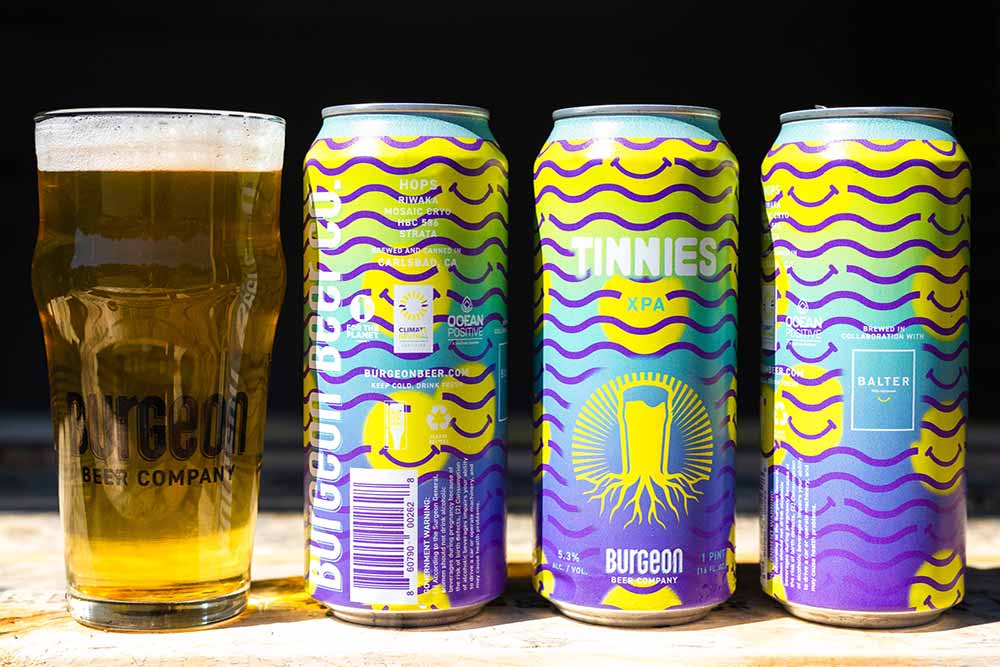
Photography courtesy of Burgeon Beer Company
On the flip side, the drive for hoppy beers in 2025 could have some interesting twists and turns.
According to data from Untappd, hazies continue to wear the crown, earning the most check-ins in 2024, followed by American IPAs and DNEIPAs.
So how do brewers continue to stand out in such a crowded field of hops and hazies?
Bernot posed a fascinating theory in her piece “Singular Haze: Brewing IPA with Its Own Kind of Juice”: “Quality is table stakes for the style—it’s obligatory, or drinkers will look elsewhere,” she wrote. “And as hazy IPA becomes commodified, these beers must have a point of view—a fingerprint that marks them as different from the sea of other (often less expensive) options that crowd the shelves and bar menus.”
We highly recommend reading her whole piece, but TL:DR: For a hazy IPA to succeed in today’s world, it must have some sort of signature. You need to be able to close your eyes, drink it, and know exactly what brewery made it.
One style that we one hundred percent think you need to keep an eye on in 2025: XPA.
We wrote extensively about how this uber-popular Australian style finally reached the West Coast. Breweries, from Cloudburst in Seattle to Burgeon Beer in Carlsbad, CA, have all made their own versions.
We expect to see this style start to bleed East in 2025.
Draft Dominates
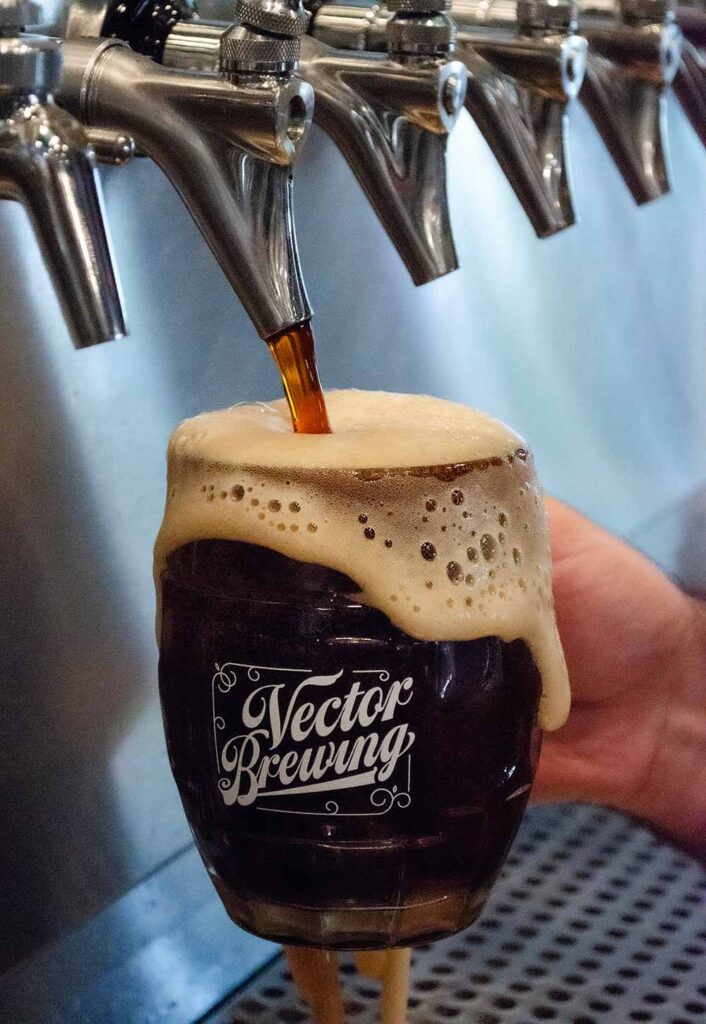
Photography courtesy of Vector Brewing
According to the Draft Beer Report from CGA by NIQ and Draftline Technologies, “Draft beer is outperforming packaged products for share, sales, and distribution in U.S. bars and restaurants.”
The report shows that the draft beer category is now worth $21.8 billion annually. Around 1.5 million draft lines pump out beer in the U.S., triple the number from the 1980s.
One number that gave us serious cause to raise our glasses in 2024, the growing craft draft line share, gives us a glimmer of hope for 2025.
In the BA’s presentation “Ten Points and Predictions for 2025,” BA President and CEO Watson specifically called the growth of draft beer a “hope for positivity.”
And the data supports us.
In 2024, CGA by NIQ reported that on-premise draft accounted for 52.3% of all out-of-home beer volumes in the U.S., compared to 47.7% from packaged beer.
“High consumer demand has led to an 8.1% rise in draft beer’s distribution points in the last twelve months—more than triple the 3.5% increase of packaged,” CGA by NIQ wrote in a press release.
“Draftline data reinforces the significance of draft beer as a strategic product. Draft beer drinkers will go to great lengths to get their favorite beer on tap,” said Draftline Technologies Founder and Principal Jennifer Hauke in a press release. “We all realized there is no substitute for quality and that, as an industry, we strive to dispense the best of the brewer’s art. This is what makes draft beer unique, as we know that dispensing quality delivers the ultimate sampling tool and the most satisfying on-tap experience.”
Similarly, a Brewbound Quarterly report from December put together in collaboration with CGA by NIQ showed that draft beer sold 4.7 times more than packaged craft beer.
We predict the number of craft beers served on draft lines will continue to grow this year.
Sustainable Sips
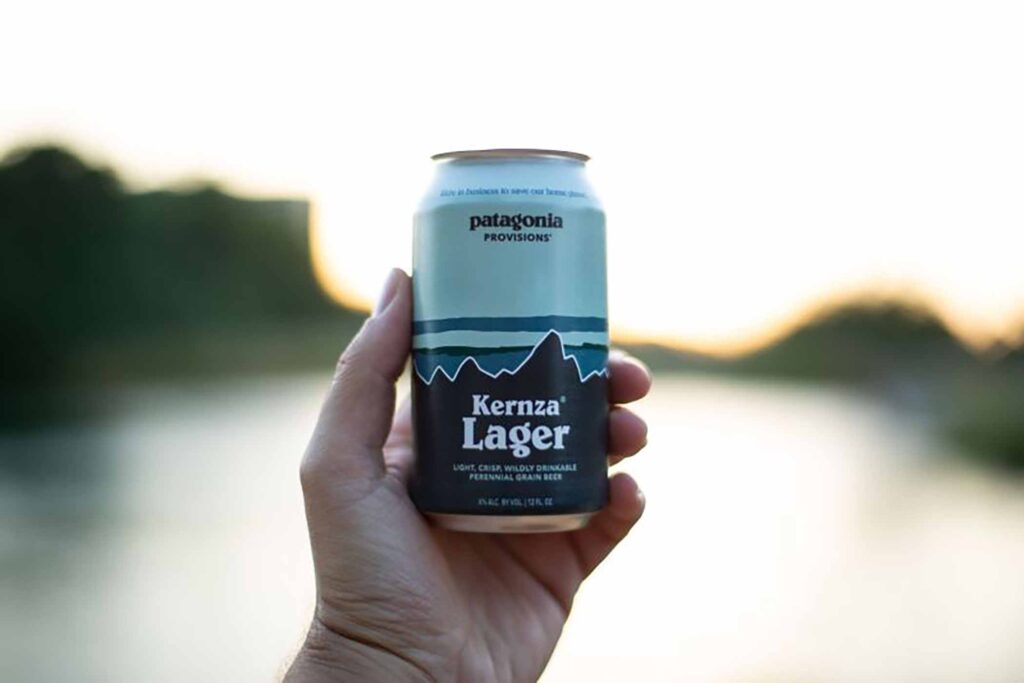
Photography courtesy of Patagonia Provisions
In the last twelve months, we wrote about Brooklyn Brewmaster Garrett Oliver’s project brewing with a sustainable West African grain called fonio.
And Hop Culture Freelancer Ruvani de Silva also wrote an award-winning piece covering Deschutes’ collaboration with Patagonia using another sustainable grain called Kernza.
We sincerely hope to see more breweries exploring and brewing with sustainable grains in the new year.
And we’re not the only ones.
Whole Foods VP of Culinary Jeff Turnas said, in a 2025 Bev-Alc Trend Prediction presentation, that he expects this to be a continued trend in the beverage-alcohol industry.
“There’s a lot of cool things going on in this space,” he said during the presentation. “These aren’t just gimmicks. These are amazing beers. We think we’ll see more and more of it.”

